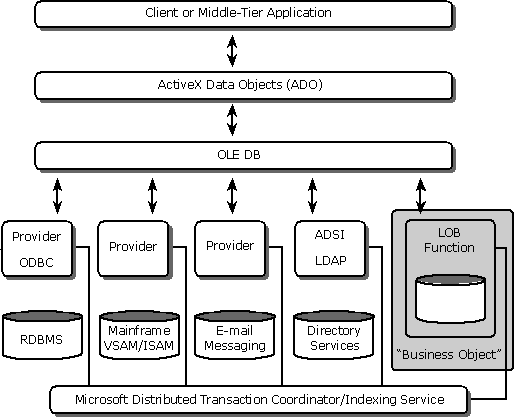
MDAC 2.5 SDK - Technical Articles
At the heart of everything in this article is Universal Data Access (UDA). Universal Data Access is the Microsoft strategy for providing access to information across the enterprise. The basic idea behind UDA is to enable you to efficiently access any data from where it is normally found, rather than moving the data to very large centralized data stores.
Centralizing the storage of data carries some unavoidable hazards. Many centralized applications are designed to store the data they manage in a proprietary format for the sake of efficiency or backward compatibility. These proprietary formats often contain information about the relationships of the elements in the data store. Trying to duplicate these relationships within a general-purpose centralized data store, while maintaining performance and storage size, can be difficult even if the format is known. This is especially true for nonrelational data stores. If the format is owned by an independent software vendor, it might be impossible for anyone but that vendor to move the data without losing information.
Furthermore, moving your data to a centralized data store often requires much time and money, as well as changes to your basic information management operations. What makes this a potential problem is that the move might lock you into one particular vendor until you could afford to move again.
Because UDA is based on open industry specifications with broad support throughout the industry, choosing UDA as your data access strategy frees you to change from vendor to vendor as you see fit.
UDA is independent of data stores, tools, and languages. It provides a high-level, easy-to-use interface, and a low-level, high-performance interface to practically any data store available. You can use this flexibility to integrate diverse data stores and use your choice of tools, applications, and platform services to create the right solutions for your needs.
Universal Data Access Architecture
